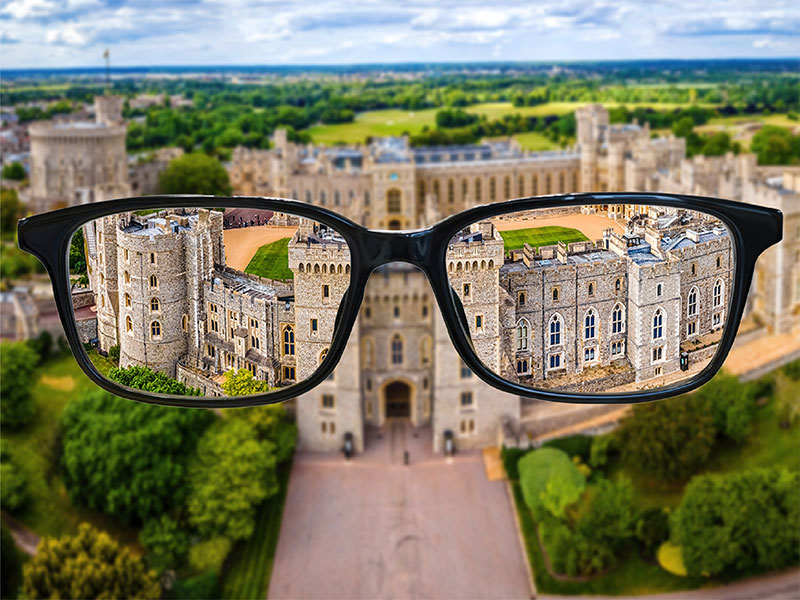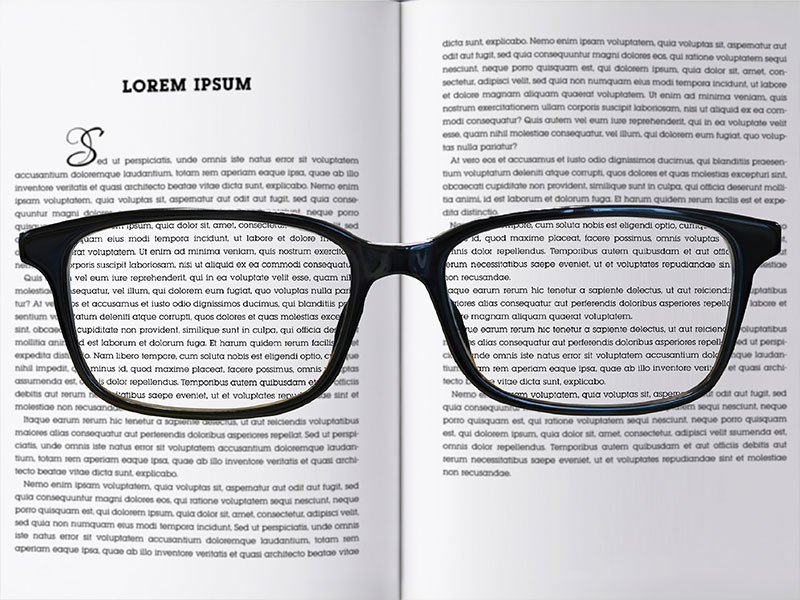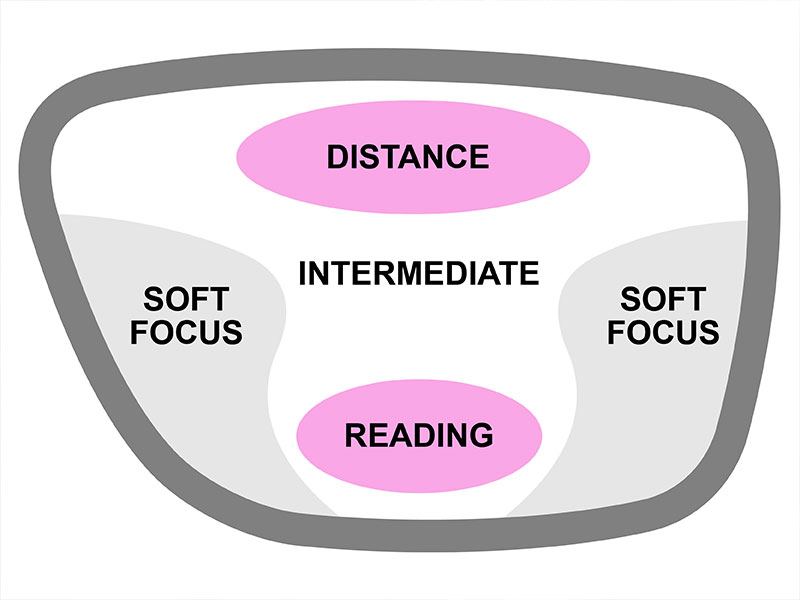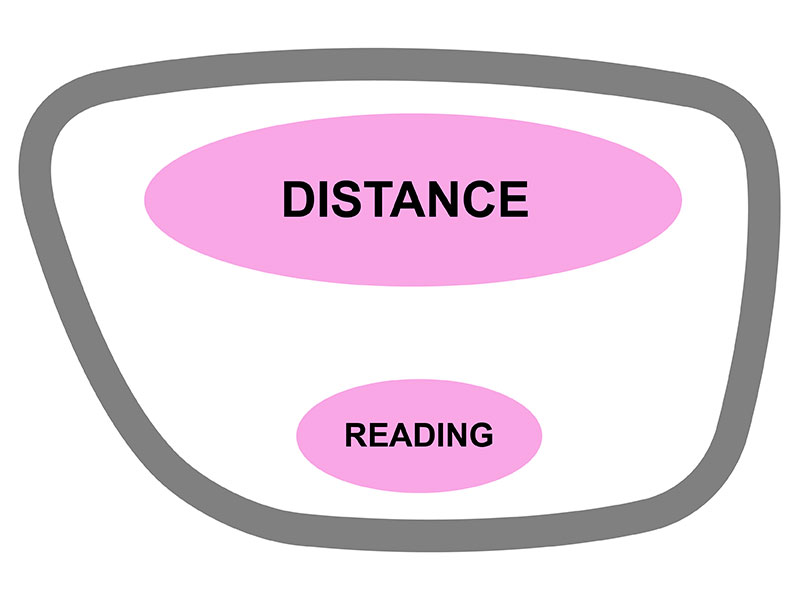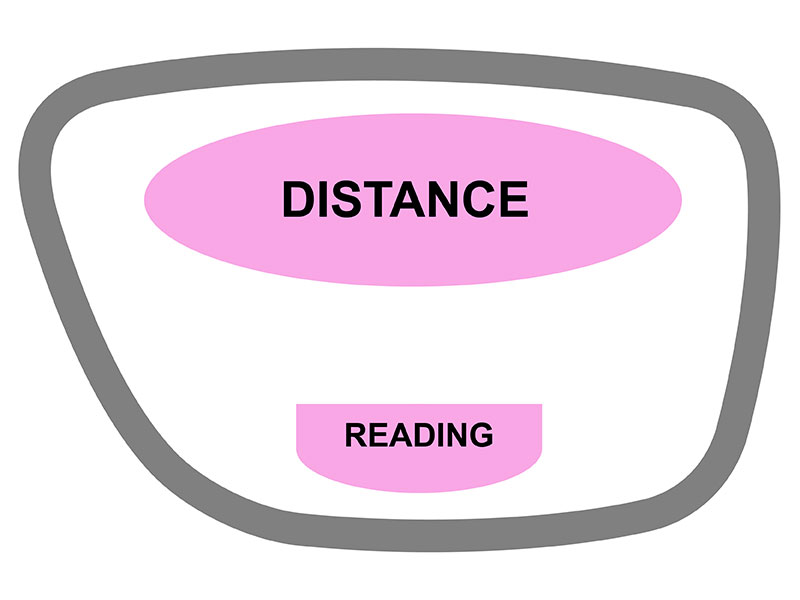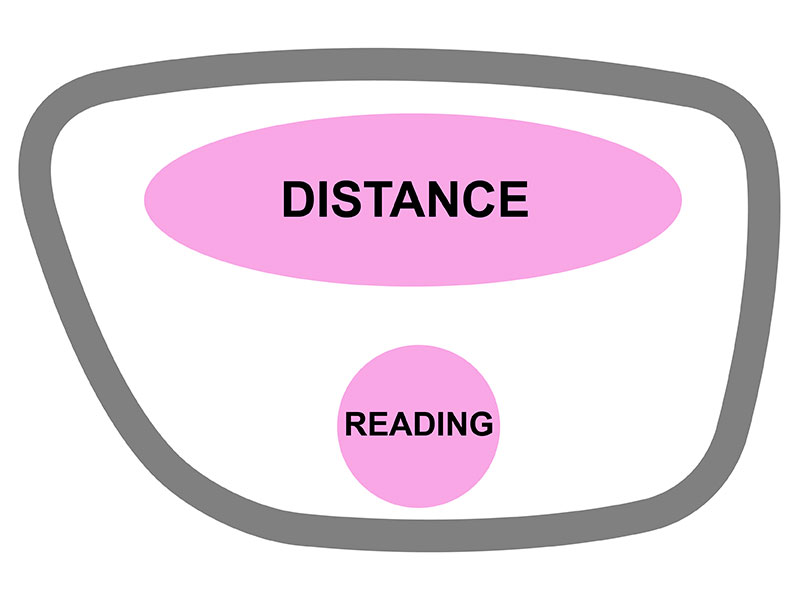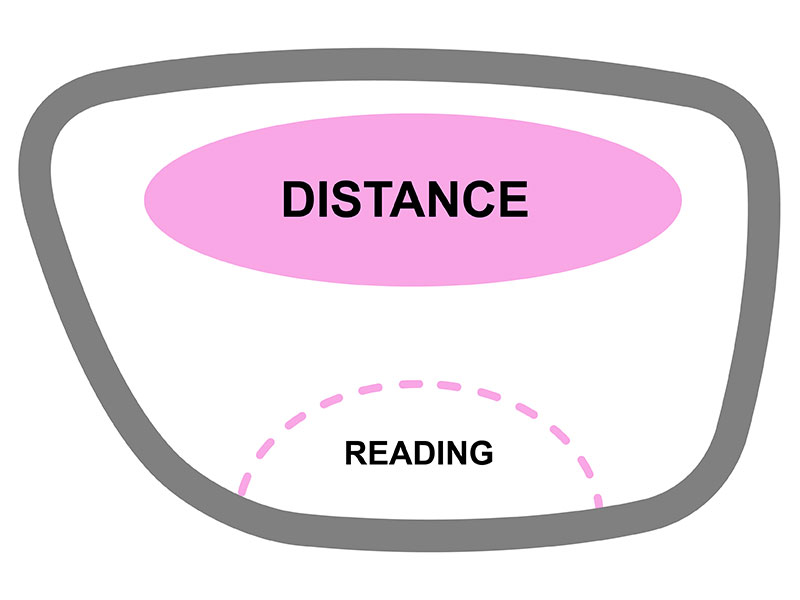Single-vision lenses
Single-vision lenses are used in glasses and sunglasses for people who suffer from short-sightedness or long-sightedness. Once you reach 40 years of age, you may start noticing issues with your vision when trying to focus on objects close by, or far away. If you experience just one of these eye conditions, rather than both, then single-vision lenses are an ideal solution for you. If, however, you experience both near and farsighted, then bifocal or varifocal lenses could be a better option for you.


